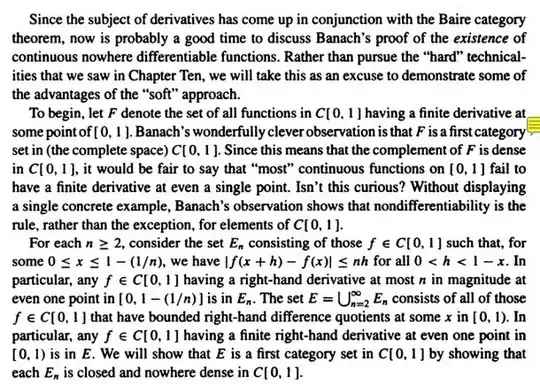Im reading Continuity and Category of Chapter11, Carothers' Real Analysis, 1ed. Here is a reading material at the end of this chapter, talking about Banach's proof of the existence of continuous nowhere differentiable functions,
I have 4 questions here,
I cannot understand the sentence in paragraph3 that is " In particular, any f∈$C$[0,1] having a right-hand derivative at most n in magnitude at even one point in [0, 1-(1/n)] is in $E_n$". I mean what is "at most n in magnitude "? Im not an english native speaker.
How did he guarantee that |f(x+h)-f(x)| =< nh for all 0 < h < 1-x ?
Why does the proof merely focus on right-hand derivatives?
What is the quotients involved in?